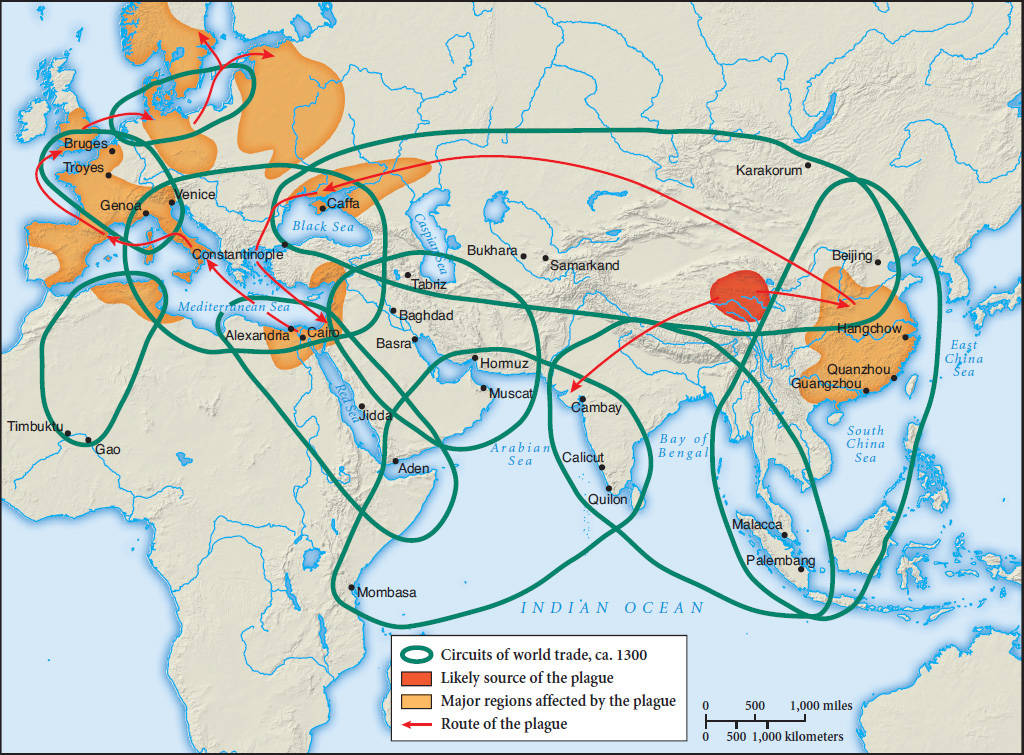Toward a World Economy
Connection
Question
What kinds of cross-cultural interactions did the Mongol Empire generate?
[Answer Question]
The Mongols themselves produced little of value for distant markets, nor were they active traders. Nonetheless, they consistently promoted international commerce, largely so that they could tax it and thus extract wealth from more developed civilizations. The Great Khan Ogodei, for example, often paid well over the asking price to attract merchants to his capital of Karakorum. The Mongols also provided financial backing for caravans, introduced standardized weights and measures, and gave tax breaks to merchants.
In providing a relatively secure environment for merchants making the long and arduous journey across Central Asia between Europe and China, the Mongol Empire brought the two ends of the Eurasian world into closer contact than ever before and launched a new phase in the history of the Silk Roads. Marco Polo was only the most famous of many European merchants, mostly from Italian cities, who made their way to China through the Mongol Empire. So many traders attempted the journey that guidebooks were published with much useful advice about the trip. Merchants returned with tales of rich lands and prosperous commercial opportunities, but what they described were long-established trading networks of which Europeans had been largely ignorant.
The Mongol trading circuit was a central element in an even larger commercial network that linked much of the Afro-Eurasian world in the thirteenth century (see Map 11.2). Mongol-ruled China was the fulcrum of this vast system, connecting the overland route through the Mongol Empire with the oceanic routes through the South China Sea and Indian Ocean.
